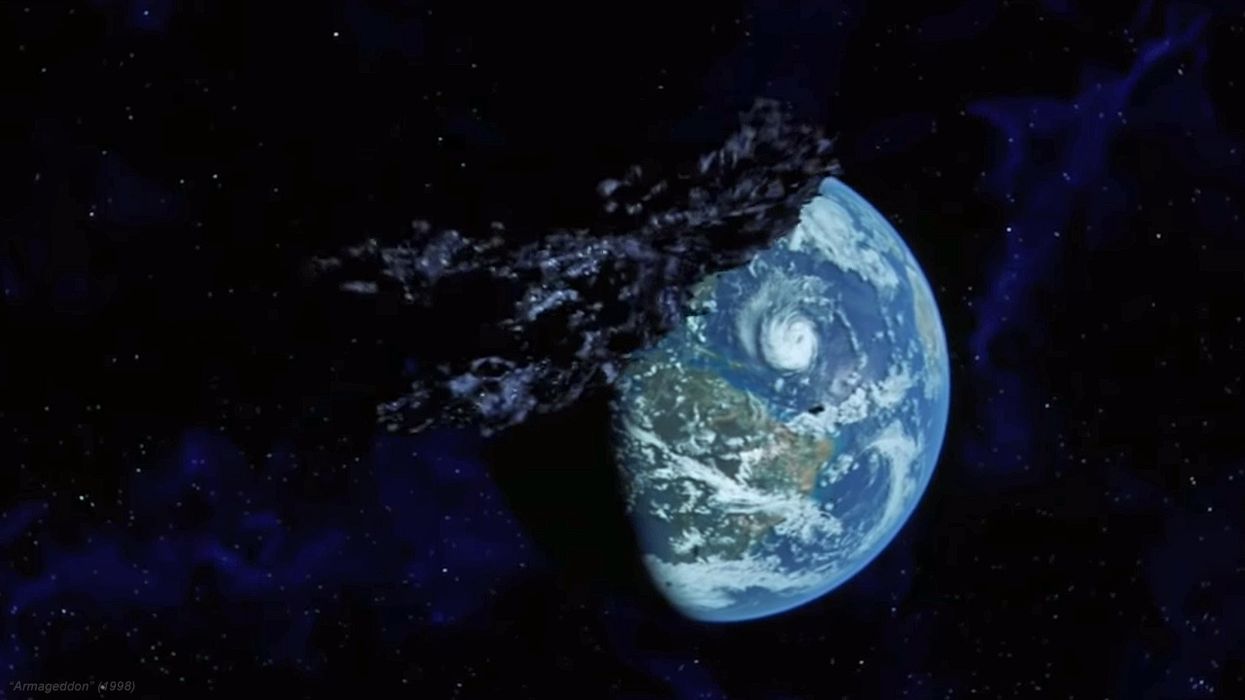
(Image source: YouTube screenshot)

(Image source: YouTube screenshot)
If it *had* been headed down here, we'd only have had a few HOURS of notice.
A huge and dangerous asteroid appeared and passed extremely close to our planet this week, seemingly "out of nowhere," in the words of one confidence-inspiring astronomer.
The huge rock was as much as 427ft across, give or take, or roughly a tenth of MILE, and basically grazed our path, in astronomical terms.
How close was it?
Within 45,000 miles. That's LESS than one-fifth of the distance to the moon, which last week we celebrated the anniversary of visiting in person.
That's pretty darn close; "Uncomfortably close," to quote Melbourne-based astronomer Michael Brown, who spoke with the Washington Post after the brush with the huge rock.
Here is some video for perspective.
This is the video of the close encounter of Asteroid 2019 OK we have been Twitting all day with the Earth: https://t.co/bjT7uhQJuO pic.twitter.com/3e4UyPcdPl
— ASAS-SN (@SuperASASSN) July 25, 2019
How bad would it have been?
Bad. Professor Alan Duffy, astronomer and the Lead Scientist at the Royal Institution of Australia, speaking with the Sydney Morning Herald, explained that an asteroid this size traveling at that speed would impact the Earth "with over 30 times the energy of the atomic blast at Hiroshima."
"It shook me out my morning complacency," said Michael Brown. "It's probably the largest asteroid to pass this close to Earth in quite a number of years."
That's a big one, alright.
Duffy, speaking to the Washington Post, said that he was as caught off-guard as everyone else. "I was stunned," he said. "This was a true shock."
Brown said much the same. "People are only sort of realizing what happened pretty much after it's already flung past us."
So why didn't we know about it? Well it was coming from the direction of the sun. If you've ever tried to catch a high fly ball around noon, then you get it. In fact, it only became visible a few days ago, just before it swooped in for a birds-eye view.
And the actual size and its trajectory were only determined hours before the actual fly-by.
The "city-killer" rock is big, and deadly, but it's not "kill the dinosaurs" big and deadly, and that too made it harder to detect.
CBS News, in their report, note that there are some 20,000 or near-Earth asteroids out there, which do come close or even hit from time to time, including one that caused destruction and injured almost 2,000 people in Russia back in 2013.
But hey, at least we're barely keeping track of them at the last possible second, right?
Here's more, from CBS. Enjoy.
WHILE YOU CAN.
Caleb Howe
Contributor